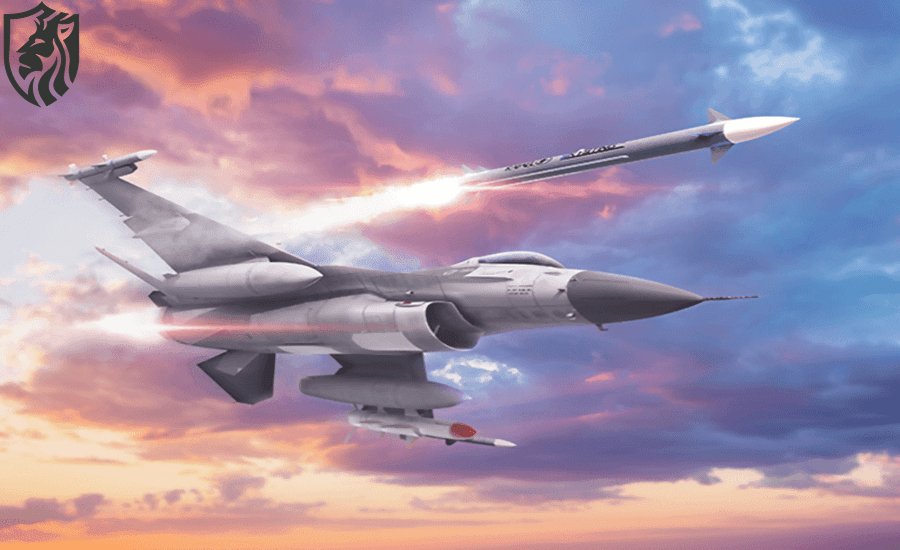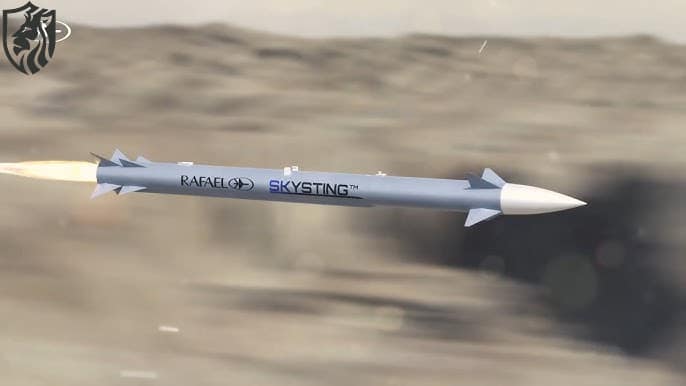
Israel Sky Sting for Tejas — 250 km Edge, Fast Integration
India may soon add a formidable long-range punch to its light fighter fleet. Israel Sky Sting for Tejas is RAFAEL’s offer to integrate a 250-kilometre BVRAAM on the HAL Tejas Mk1A, with Su-30MKI options also on the table. The proposal, reportedly advanced during July 2025 meetings in Tel Aviv, aligns with deepening India–Israel defence ties and the IAF’s demand for extended-range air dominance.
Why Sky Sting matters now
The Tejas Mk1A already fields an AESA radar and a modern DFCC. Therefore, the Israel Sky Sting for Tejas can use the ELM-2052 sensor system and advanced electronics to engage targets that are far away and not in sight. The 250-kilometre envelope challenges peer threats, such as China’s PL-15, which has pressured South Asian air combat plans in recent years. Moreover, a two-platform path—Tejas and Su-30MKI—improves fleet commonality and stock efficiency.
Sky Sting Features
| Feature | What it is | What it means for pilots / ops |
|---|---|---|
| Role | Long-range BVRAAM (air-to-air) | It is specifically designed to target enemy aircraft that are located far beyond visual range. |
| Max range | Up to ~250 km (reported) | Engage threats before they can shoot back or turn away. |
| Propulsion | Three-stage rocket motor | The rocket motor provides strong, sustained speed for long-reach intercepts. |
| Mid-course guidance | GPS + Inertial Navigation (INS) | Stays on track over long distances, even without constant radar lock. |
| Terminal seeker | Active RF (radar) seeker | The seeker becomes “active” when it approaches the target in order to complete the task. |
| Datalink | Two-way, in-flight updates | Retarget mid-flight, refine aim, or coordinate shots with wingmen. |
| Warhead | High-explosive, air-to-air optimised | The warhead is lethal against fighter aircraft and is specifically designed to defeat evasive manoeuvres. |
| ECCM resilience | Built to work under heavy jamming | The system maintains guidance even in contested and noisy electromagnetic environments. |
| Weight | ~180–200 kg (reported) | It is compatible with Tejas/Su-30 load plans without requiring significant compromises. |
| Compatible radars | ELM-2052 AESA on Tejas Mk1A | Long-range detection and tracking while scanning enable earlier shots. |
| Platforms (India) | Tejas Mk1A (initial), option for Su-30MKI | Common missiles across fleets simplify training and stockpiles. |
| Integration timeline | ~18 months (projected) | Fast path to frontline use with limited live-fire trials. |
| Trial phases | Captive trials ~6 months, then live shots | Accelerated testing to clear the envelope quickly. |
| Initial quantity | ~200–300 by mid-2026 (reported) | Early lots support squadron-level adoption and tactics work-up. |
| Entry-into-service | Targeting mid-2027 (projected) | Planned window for operational deployment if tests stay on track. |
| Operational effect | Counters PL-15-class threats | Extends India’s BVR reach and pressures adversary AWACS/ISR/tankers. |
Rapid path to clearance
RAFAEL and Indian stakeholders anticipate an 18-month integration window with a limited number of live-fire trials before full operational clearance. According to program timelines, captive flight trials could conclude in six months, followed by guided shots, which would position initial deliveries of 200–300 rounds by mid-2026 and entry into service around mid-2027. If achieved, the Israel Sky Sting for Tejas accelerates India’s long-range air-to-air maturity.

Inside the missile: range, guidance, resilience
At roughly 180–200 kg, Sky Sting uses a three-stage rocket motor for sustained high-Mach kinematics. Mid-course, it relies on GPS and INS, then transitions to an active RF seeker in the endgame. A two-way datalink allows mid-flight retargeting and cooperative tactics. Therefore, Israel’s Sky Sting for Tejas remains lethal under dense jamming, with a high-explosive warhead designed to defeat evasive manoeuvres and electronic countermeasures.
Sensor and cockpit synergy
The Tejas Mk1A’s ELM-2052 AESA supports long-range detection, track-while-scan, and multi-target engagement. Consequently, pilots can prosecute BVR intercepts while retaining situational awareness. The DFCC and open-architecture mission computer simplify weapon messaging, health monitoring, and envelope cues. In practice, Israel’s Sky Sting for Tejas should integrate cleanly with current human-machine interfaces and existing air-combat workflows.
Force-planning impacts for the IAF
India seeks credible reach, high single-shot kill probability, and robust ECCM at scale. In that context, the Israel Sky Sting for Tejas fills a near-term gap while the Astra MkIII continues its development and trials. Additionally, mixed stocks mitigate supply-chain risk and support surge operations. A Tejas Mk1A armed with a 250 km BVRAAM also complicates adversary AWACS, ISR, and tanker orbits, which reshapes regional air tasking and deterrence.

Industrial and strategic angles
The offer underscores India–Israel defence co-development momentum. Integration work could involve Indian test ranges, ground telemetry, and mission data reprogramming. Over time, local support—software loads, I-level maintenance, and datalink crypto handling—would strengthen sovereign sustainment. Thus, Israel’s Sky Sting for Tejas is more than a missile; it is a pathway to deeper technical collaboration.
What to watch next
Key milestones include captive-carry completion, seeker-guided firings, and envelope expansion on Tejas and Su-30MKI. Certification pace will depend on telemetry throughput, sortie rate, and range availability. If the schedule holds, frontline units could see operational rounds by mid-2027, placing Israel’s Sky Sting for Tejas squarely in India’s air-dominance toolkit.






